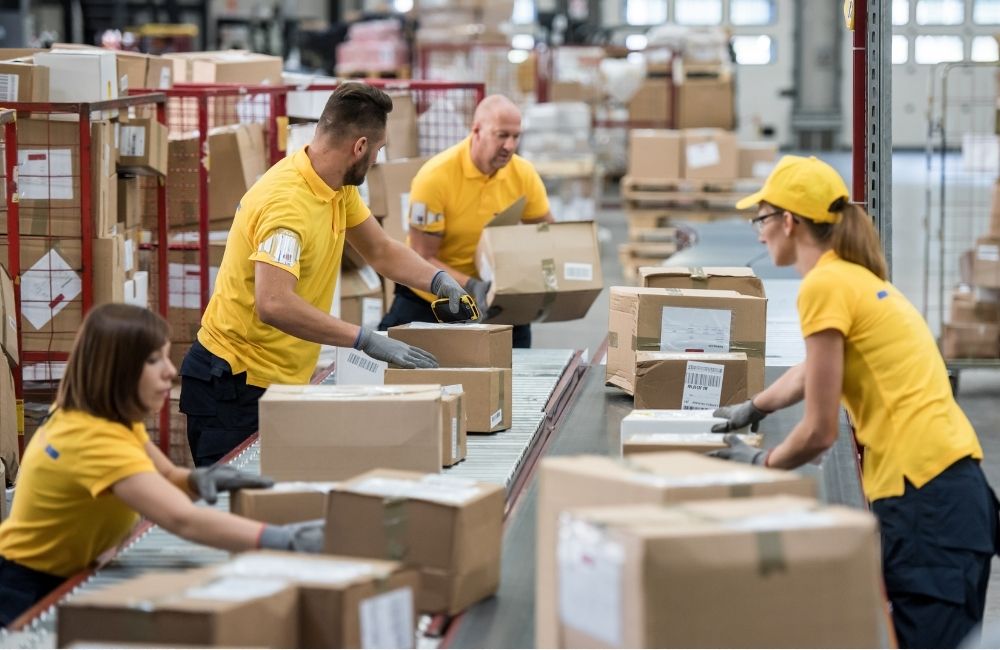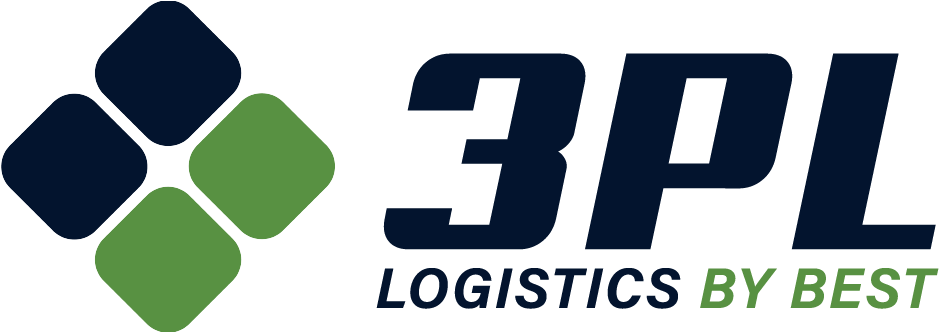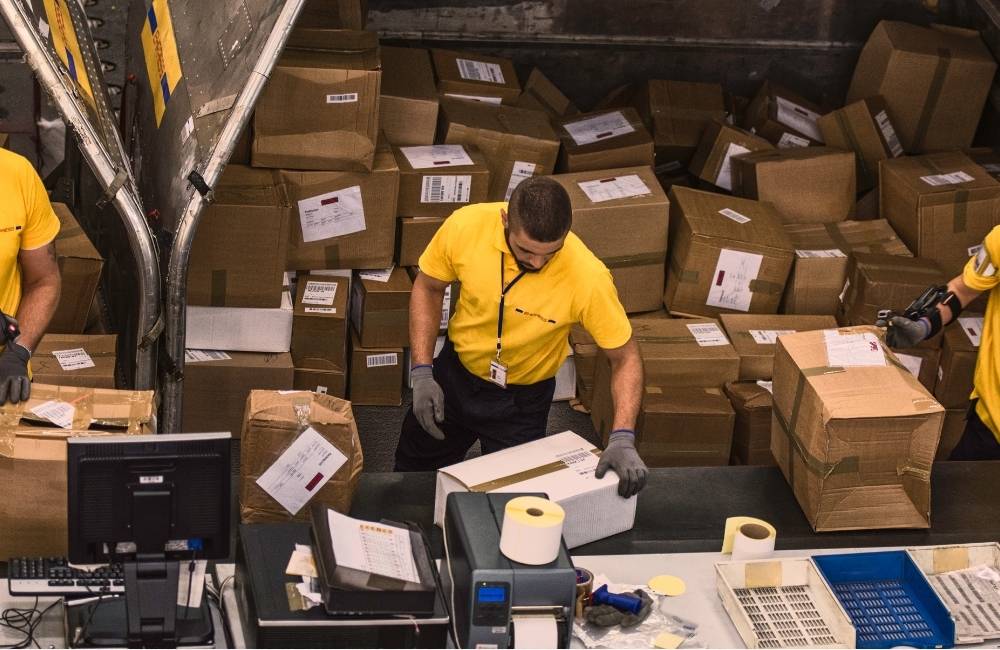Third-party logistics (3PL) has transformed how companies manage their supply chains. By outsourcing logistics services to specialized providers, businesses can achieve cost savings, improved efficiency, and faster delivery times. However, outsourcing is not without its risks. Understanding the third party logistics advantages and disadvantages is essential before taking the leap.
Here’s what businesses can expect before choosing to outsource their logistics operations.
Table of Contents
Key Takeaways
✔ Third party logistics helps businesses cut costs by eliminating the need for warehouses, fleets, and in-house logistics teams.
✔ Third party logistics enables easy scalability, allowing companies to handle seasonal spikes or market expansion without permanent investments.
✔ Businesses gain access to logistics expertise and technology that might otherwise be out of reach internally.
✔ Outsourcing logistics allows internal teams to focus more on growth strategies rather than daily operational tasks.
✔ Delivery speed improves as 3PL providers use optimized routes and strategically located fulfillment centers.
✔ Companies benefit from built-in risk management and regulatory compliance through established 3PL processes.
✔ Returns management becomes more efficient as third-party providers handle reverse logistics and customer satisfaction.
 What Is Third-Party Logistics (3PL)?
What Is Third-Party Logistics (3PL)?
Third-party logistics refers to the use of external companies to handle logistics operations. These operations may include warehousing, inventory management, order fulfillment, shipping, and returns. Companies that specialize in 3PL allow businesses to focus on their core functions while leveraging the logistics provider’s expertise and infrastructure.
A 3PL provider acts as an intermediary between manufacturers and customers. Unlike first-party logistics (own fleet) or second-party logistics (using carriers), 3PL companies take over multiple logistics processes. Some may offer technology platforms, analytics, and strategic insights, enhancing the logistics experience even further.
In recent years, the adoption of 3PL has grown across industries, particularly in retail, e-commerce, and manufacturing. In fact, a 2022 study found that 73% of shippers and 95% of 3PL providers agreed that partnering with 3PLs helped improve service levels to customers.
7 Advantages of Third Party Logistics
From advanced technologies and expert insights to flexible operations and better customer service, the 3PL benefits are far-reaching and impactful when the right provider is chosen. Understanding third party logistics advantages and disadvantages is key to determining if outsourcing is right for your business.
1. Cost Efficiency
A primary 3PL benefit is its potential to reduce logistics-related expenses.
- Lower Overhead Costs: No need to invest in warehouses, trucks, staffing, or logistics software. The 3PL absorbs these costs and spreads them across multiple clients.
- Carrier Discounts: Due to high shipping volumes, 3PLs receive discounted freight rates from carriers—savings that are often passed on to clients.
- Predictable Pricing: With defined contracts and service scopes, businesses gain more predictability in monthly logistics spending.
2. Scalability and Flexibility
A significant advantage of third party logistics is its adaptability to changing needs.
- Seasonal Support: 3PLs can quickly increase capacity during peak seasons or promotional periods without requiring permanent infrastructure.
- Market Expansion: Entering new regions becomes easier with 3PLs that have multiple distribution centers and local knowledge.
- Customizable Solutions: Services can be adjusted as business models evolve—ideal for startups and enterprises alike.

3. Access to Expertise and Technology
Another core 3PL benefit is access to systems and skills that may be out of reach internally.
- Logistics Specialists: 3PL providers employ industry professionals who understand compliance, routing, international shipping, and supply chain optimization.
- Advanced Technology: Tools like WMS (Warehouse Management Systems), TMS (Transportation Management Systems), and real-time tracking improve accuracy, visibility, and responsiveness.
- Data-Driven Insights: Analytics dashboards help businesses make informed decisions about inventory levels, shipping performance, and customer trends.
4. Improved Focus on Core Business
Delegating logistics frees up time and resources for strategic initiatives.
- Operational Efficiency: Internal teams spend less time solving shipping issues or managing warehouses, and more time on sales, branding, and customer relationships.
- Leadership Alignment: Business leaders can align departments around growth goals instead of being distracted by day-to-day logistics.
5. Enhanced Service Levels and Speed
Customers today expect fast, accurate, and transparent deliveries—3PLs help meet those demands. Customer expectations are high, with 78% of clients demanding superior service from 3PL providers compared to other industries.
- Multiple Fulfillment Locations: Orders can be routed from the warehouse closest to the customer, reducing transit time and shipping costs.
- Optimized Shipping: Route planning, carrier management, and automation reduce delays and minimize human error.
- KPI Monitoring: Most 3PLs track metrics such as order accuracy, on-time delivery, and return rates to maintain quality and accountability.

6. Risk Reduction and Continuity
Another overlooked advantage of third party logistics is the ability to maintain operations during disruptions.
- Disaster Preparedness: 3PLs often have contingency plans, backup systems, and alternative carriers in place to prevent downtime.
- Regulatory Compliance: Providers stay updated on shipping regulations, customs processes, and safety standards, reducing compliance risk for clients.
7. Improved Returns Management
Returns are a growing concern, especially in e-commerce. A reliable 3PL can streamline this process.
- Reverse Logistics Solutions: Many 3PLs handle returns processing, restocking, and refurbishment, easing the burden on internal teams.
Customer Satisfaction: Faster, smoother returns lead to happier customers and fewer support requests.
7 Drawbacks of Outsourcing Logistics
Despite the substantial 3PL benefits, outsourcing logistics isn’t without its risks. It’s essential to evaluate the third party logistics advantages and disadvantages comprehensively before committing. Understanding these potential pitfalls helps businesses make an informed decision.
1. Loss of Control
- Reduced Oversight: Businesses relinquish day-to-day control over inventory, packaging, and shipment decisions once they partner with a 3PL.
- Limited Customization: Custom processes may be restricted by the 3PL’s operational framework, limiting the company’s ability to personalize the customer experience.
- Dependency on Provider: Operational delays or errors on the provider’s end may leave your business with little room to intervene or correct the issue quickly.
2. Integration Challenges
- System Compatibility Issues: A major technical hurdle is ensuring the 3PL’s platforms work seamlessly with your own software systems (e.g., order management or ERP tools).
- Data Latency and Errors: Improper or delayed data syncing can result in stock discrepancies, delayed fulfillment, or billing inaccuracies.
- IT Resource Demands: Setting up integrations may require significant involvement from your internal tech team, especially if API documentation or support from the 3PL is limited.

3. Brand Representation Risks
- Customer Perception: Since the end customer interacts with the delivery experience, any delays, damages, or poor communication reflect directly on your brand.
- Lack of Personalization: A generic, third-party packaging or delivery approach can dilute brand identity, especially important for premium or niche products.
- Service Inconsistencies: A 3PL may not uphold the same standards you would for handling fragile goods, gift wrapping, or customized inserts, leading to dissatisfaction.
4. Operational Misalignment
- Differences in Workflow and Priorities: Your internal operations may not perfectly align with the 3PL’s standard procedures, which can lead to inefficiencies or conflicting expectations.
- Service Level Gaps: If the 3PL does not fully understand your industry or customer base, the quality and pace of service may not meet your standards.
- Adjustment Time: Even with a solid partnership, it often takes time to synchronize teams, clarify roles, and optimize daily coordination for smooth performance.
5. Security and Compliance Issues
- Data Protection Risks: Sharing sensitive customer and inventory data with a third party increases vulnerability to data breaches or misuse.
- Regulatory Non-Compliance: If the 3PL is unaware of or fails to follow industry-specific regulations (e.g., FDA, GDPR, OSHA), your business could be liable.
- Product Traceability Concerns: In sectors requiring detailed tracking—like pharmaceuticals or perishables—a gap in compliance could result in fines, recalls, or reputational damage.
6. Communication Delays
- Slower Issue Resolution: If support teams are overwhelmed or geographically distant, time-sensitive issues may not be addressed promptly.
- Lack of Real-Time Updates: Not all 3PLs offer full visibility into fulfillment stages, leading to blind spots in customer service or inventory planning.
7. Cultural or Strategic Misalignment
- Different Priorities: A 3PL focused solely on efficiency may not understand or prioritize the customer experience as much as your internal team would.
Communication Gaps: Misalignment in language, time zones, or values can cause disconnects, especially with offshore providers.
8 Key Considerations Before You Outsource
Before partnering with a 3PL provider, businesses must carefully evaluate the third party logistics advantages and disadvantages within the context of their goals, industry, and operational readiness. Below are critical areas to assess before making a commitment:
1. Business Size and Complexity
- Small vs. Large Operations: Startups or single-channel retailers may find in-house logistics more manageable, while growing companies with multiple SKUs and sales channels often require external support.
- Volume Consistency: Businesses with high or fluctuating order volumes are better candidates for outsourcing due to the flexibility and capacity a 3PL can offer.
2. In-House Capability vs. Outsourcing Potential
- Resource Constraints: If your team lacks logistics expertise, warehouse infrastructure, or dedicated staff, outsourcing can fill those operational gaps efficiently.
- Time Investment: Logistics management can divert attention from sales, product development, and innovation. If logistics consumes too much of your internal bandwidth, outsourcing becomes a strategic advantage.
3. Customer Expectations
- Delivery Speed and Accuracy: Today’s consumers expect next-day or even same-day delivery. 3PL providers with distributed warehouses and route optimization can help meet those expectations.
- Customer Service Demands: If customer satisfaction is tied to delivery experience, response times, and seamless returns, a 3PL may enhance performance in these areas.
4. Cost-Benefit Analysis
- Upfront and Long-Term Costs: Compare the capital and operational expenses of running an in-house logistics team with the cost of outsourcing to a 3PL.
- Hidden Costs: Account for inventory shrinkage, employee turnover, technology upkeep, and freight negotiations—often overlooked in DIY logistics.
- Value of Reallocation: Consider the benefits of redirecting internal resources (financial or personnel) to growth-driving areas such as marketing or R&D.
5. Operational Control and Data Transparency
- Visibility Expectations: Determine your need for real-time inventory tracking, order updates, and shipping status. Some 3PLs provide advanced dashboards, while others may offer limited access.
- Accountability and Reporting: Ask whether the provider offers detailed performance reports, including metrics like delivery accuracy, returns processing, and warehouse efficiency.
- Response Time: Consider how quickly issues are resolved and whether your team will be able to influence processes when problems arise.
6. Industry-Specific Requirements
- Regulatory Compliance: Industries like healthcare, food, and electronics may have strict storage, handling, or shipping regulations. Not all 3PLs are equipped to comply.
- Specialized Handling: Temperature-controlled shipping, fragile goods, or hazardous materials require specialized logistics capabilities—ensure your provider can accommodate them.
7. Integration and Onboarding Complexity
- Tech Stack Compatibility: Assess whether the 3PL’s systems integrate with your order management, CRM, or ERP platforms.
- Training and Transition Time: Evaluate how long it will take to transition to the 3PL’s systems, train staff, and fully integrate workflows without disrupting service.
8. Cultural and Strategic Alignment
- Shared Values: A 3PL acts as an extension of your brand. Their service philosophy, communication style, and quality standards should align with yours.
- Scalability Roadmap: Choose a partner that can grow with you, adding more services, warehouses, or technology as your needs evolve.

How to Choose the Right 3PL Partner
Selecting the right provider is critical to experiencing the true 3PL benefits. Here’s how businesses can evaluate and identify the ideal logistics partner:
1. Look for Industry Experience
Choose a provider with a strong track record in your industry. Their knowledge of common challenges, compliance needs, and seasonal trends can be a major asset. Request case studies or references from clients in similar sectors to assess fit.
2. Assess Technology Capabilities
Ensure the 3PL offers modern tools for tracking, reporting, and integration. Real-time visibility into orders, shipments, and inventory levels is essential for managing customer expectations. The right technology makes communication smoother and reduces errors.
3. Prioritize Geographic Reach
If your customers are nationwide or global, ensure the 3PL has warehousing and transportation coverage to match. Proximity to customer clusters helps lower shipping costs and reduce delivery times. A limited network may limit your growth or create bottlenecks.
4. Review Service Offerings
Not all 3PLs provide the same services. Some may specialize in B2B fulfillment, while others focus on eCommerce or reverse logistics. Match the provider’s capabilities to your operational needs. Make sure they can scale with your business as it grows.
5. Evaluate Transparency and Communication
A good 3PL partner provides clear service level agreements (SLAs), transparent billing, and regular updates. Communication should be proactive, not reactive. Misaligned expectations or unclear reporting can lead to frustration and mistakes.
6. Start with a Pilot Program
Before fully committing, consider launching a test phase or pilot project. This allows both parties to evaluate the partnership, identify improvement areas, and ensure alignment on key processes. This step minimizes risk and builds confidence in the provider’s capabilities.
Frequently Asked Questions
The pros of 3PL logistics include reduced operational costs, scalability, expert support, and faster shipping. The cons involve reduced control, potential integration issues, and brand consistency risks. Evaluating both sides helps determine if outsourcing aligns with your business goals.
Businesses experiencing rapid growth, high order volumes, or complex logistics needs should consider using a 3PL. It’s especially useful for companies expanding into new markets or lacking internal logistics infrastructure. Startups, e-commerce brands, and large enterprises alike can benefit.
Companies use 3PLs to streamline operations, reduce costs, and improve delivery speed. Outsourcing allows internal teams to focus on core functions like sales and customer service. It also provides access to advanced logistics technology and professional expertise.
Profit margins for 3PL companies typically range from 5% to 15%, depending on scale, services, and efficiency. High-volume operations with optimized processes tend to earn better margins. Technology integration and value-added services can also boost profitability.
Start by evaluating a provider’s experience, technology, geographic coverage, and service offerings. Look for transparency, scalability, and alignment with your company’s needs and values. A pilot project can help assess performance before committing fully.

Ready to Optimize Your Supply Chain? Partner with 3PL Logistics By Best!
If you’re looking to streamline your operations and experience the true advantages of third party logistics, it’s time to work with a trusted local expert. 3PL Logistics By Best in New York City offers the experience, flexibility, and technology your business needs to grow. From cost savings to fast, reliable shipping, our team understands what NYC businesses require to stay competitive.
Businesses across New York City turn to 3PL Logistics By Best for scalable solutions, expert support, and seamless integration. Whether you’re a startup or an established brand, our New York City-based provider is ready to help you overcome logistics challenges and elevate your customer experience.
Trust 3PL Logistics By Best in New York City to be your go-to partner for efficient, reliable, and future-ready logistics services. Contact us today!

